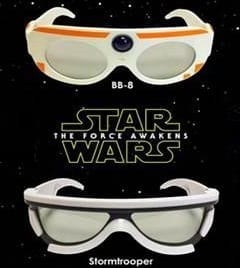After seeing the recent 3D movie, Star Wars The Force Awakens, my son felt dizzy and a little nauseous.
Why? Isn’t 3D the way we normally see the world? What do our eyes do differently while watching a 3D movie that they don’t do in the normal environment?
Answer: The movie screen is a fixed distance away, so our eyes don’t change focus even when objects in the 3D appear to move towards us because the distance to the screen remains a constant. In real conditions when an object approaches you, you focus and constantly adjust your focus and at the same time your eyes converge to the desired focal point to keep the object clear and single. However in the theatre your focal length remains fixed.

The apparent position of the Millennium Falcon in the 3D movie does not require you to focus or converge your eyes and your eyes remained fixed on the screen. If your accommodation was used the screen would become blurred due to the change in focus.
Unfortunately for 3D movies, focussing isn’t all that occurs to give you three dimensional view of the world. When we fix our gaze on an object in space, the eyes rotate inwards to make the lines of sight of the two eyes intersect at the location of the object (fixation). So when the Millennium Falcon flies towards your face, your eyes converge and when it sweeps into the distance they diverge. This instinctive response is known as “vergence.” The accommodation and vergence responses are well coordinated so that the point where the lines of sight of our eyes intersect is also the point where our eyes focus.
In a 3D illusion this coordination between the two muscle types is disrupted, because the extraocular muscles want to converge on where the object appears to be, while the ciliary muscles want to stay focused on the screen. This conflict is the main source of discomfort in 3D movies.
Some people experience double vision with 3D movies. The circular polarisation optics of 3D movie glasses make sure the left eye receives a different view angle to the right eye. Our brain will then perceive a depth map of the scene. However, if the two views don’t quite fall on the right locations in each eye, instead of a single view with 3D depth we experience two separate images.
Hence the double vision.
If you are one the many people who suffer headaches, double vision, dizziness and nausea with 3D movies a review of your accommodative – convergence system with me can measure your fusional vergence reserves. If these are limited, eye exercises can be implemented to improve your eyes muscle tone and make 3D movies more pleasurable as well as help with concentration for reading. If children complain of vision problems with 3D movies it may be the tip of the iceberg.
Have fun at the movies this summer.
Dr Ieuan H. Rees. (Optometrist)
Buck & Todd Optometrist
Located at 103 Alfred Street, Mackay, 4740.

